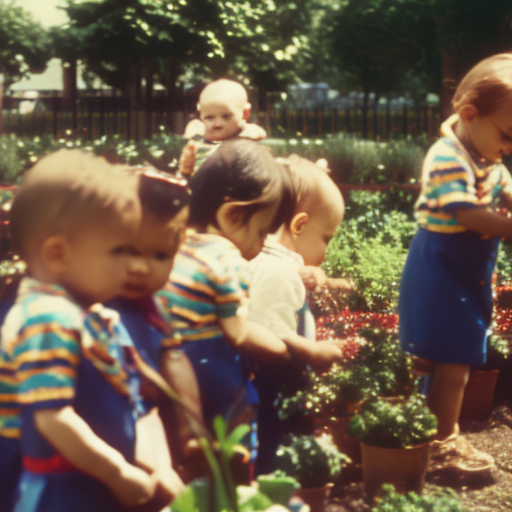"Cherishing Little Steps - A Haven for Baby and Family Journeys"
Cultivating Empathy in Toddlers
When it comes to nurturing empathy in little ones, you might find yourself on a journey of discovery. The early years of a child’s life are filled with countless opportunities to shape their understanding of emotions and compassion.
As a parent, you play a pivotal role in paving the way for your toddler’s empathetic growth. But how exactly can you do that? Well, let’s just say there are some intriguing strategies and practices that can set the stage for a harmonious and empathetic future.
Now, if you’re curious to find out more about these techniques and how they can positively impact your toddler’s development, then let’s explore this fascinating path together.
Key Takeaways
- Empathy fosters understanding and connection with others’ emotions
- Modeling empathy as a parent is crucial for toddlers’ development
- Play-based activities and storytelling are effective tools for teaching empathy
- Reading books that promote empathy helps cultivate empathy in toddlers
The Importance of Empathy in Toddlers

Empathy plays a crucial role in the development of toddlers, fostering their ability to understand and connect with the emotions of others. It’s an essential skill that enables toddlers to form meaningful friendships and navigate social interactions smoothly. Empathy in toddler friendships involves the ability to recognize and respond to the emotions of their peers, showing care and understanding.
Cultivating empathy in toddlers can be done through various activities, and art is one effective method. Art allows toddlers to express themselves freely and explore different emotions visually. Through drawing, painting, and crafting, toddlers can learn to identify and communicate their own feelings, as well as recognize emotions in others. This process helps them develop empathy by encouraging them to put themselves in someone else’s shoes and understand their perspective.
Engaging toddlers in art activities that involve collaboration, such as group murals or creating art for others, can also foster empathy. By working together, toddlers learn to listen, share ideas, and respect each other’s opinions, promoting a sense of empathy and teamwork.
Understanding Toddler Emotional Development

What factors influence the emotional development of toddlers? Understanding toddler emotional development is crucial for parents and caregivers to provide support and create a nurturing environment. There are several key factors that influence a toddler’s emotional development, including genetics, temperament, attachment, and environmental influences.
Genetics play a role in a child’s emotional development, as certain traits and predispositions can be inherited. Temperament, which refers to a child’s innate personality traits, also influences emotional development. Some children may be naturally more sensitive or prone to intense emotions, while others may be more even-tempered.
Attachment, the emotional bond between a child and their primary caregiver, is another critical factor. A secure attachment fosters emotional well-being and empathy in toddlers. Conversely, inconsistent or neglectful caregiving can hinder emotional development.
Environmental influences, such as the quality of interactions and experiences, also shape emotional development. Positive and nurturing interactions promote emotional intelligence and empathy in toddlers. On the other hand, exposure to adverse experiences or a stressful environment can negatively impact emotional well-being.
To better understand toddler emotional development, here is a table outlining some common emotional milestones and practical ways to promote empathy at home:
| Emotional Milestones | Promoting Empathy at Home |
|---|---|
| Recognizing emotions | Label and validate feelings |
| Sharing and taking turns | Encourage cooperative play |
| Expressing empathy | Model empathy in actions |
Modeling Empathy as a Parent

To cultivate empathy in toddlers, it’s essential for parents to model empathetic behavior in their daily interactions. Children learn by observing and imitating their parents, so it’s crucial for parents to demonstrate empathy in their own actions and words.
Here are some effective parenting techniques and empathy-building activities that you can incorporate into your daily routine:
-
Practice active listening: When your child expresses their feelings, give them your undivided attention. Make eye contact, nod, and respond with empathy by acknowledging their emotions.
-
Use descriptive praise: Instead of simply saying ‘good job,’ praise your child’s empathetic actions. For example, if they share a toy with a friend, say, ‘I noticed how kind and caring you were when you shared your toy. That made your friend feel happy.’
-
Engage in perspective-taking activities: Encourage your child to put themselves in someone else’s shoes. For instance, while reading a story, ask questions like, ‘How do you think the character feels right now?’ This helps them develop an understanding of others’ emotions.
Teaching Empathy Through Play

One effective way to teach empathy to toddlers is through engaging in play-based activities. Play is a natural and enjoyable way for toddlers to learn and develop important skills, including empathy. By incorporating art into play, you can create opportunities for your child to express their emotions and understand the feelings of others. Painting, drawing, or sculpting can help your toddler explore different emotions and perspectives, fostering empathy and understanding.
Another powerful tool for teaching empathy is storytelling. Through storytelling, you can introduce your child to different characters and situations, allowing them to step into someone else’s shoes and understand their experiences. Choose stories that highlight empathy, kindness, and compassion, and discuss the characters’ emotions and actions with your child. This not only promotes empathy but also encourages critical thinking and perspective-taking.
When engaging in play-based activities, be present and actively participate with your child. Show genuine interest in their creations or stories, and use open-ended questions to encourage them to think about how others might feel in different situations. By incorporating art and storytelling into play, you’re providing your child with valuable tools for developing empathy and understanding towards others.
Reading Books That Promote Empathy
When cultivating empathy in toddlers, reading books that promote empathy can be a powerful and effective tool. Books have the ability to transport children into different worlds, exposing them to diverse characters and situations that encourage them to understand and relate to others. Here are three ways in which reading books can help foster empathy in young children:
-
Exploring empathy through art: Many books incorporate illustrations and artwork that vividly depict emotions and experiences. By engaging with these visual representations, toddlers can develop a deeper understanding of empathy. Encourage your child to observe and discuss the characters’ facial expressions, body language, and actions, helping them connect with the emotions being portrayed.
-
Using technology to teach empathy: In today’s digital age, there are various interactive e-books and apps available that focus on empathy-building. These digital resources often include features that allow children to make choices for the characters, leading to a greater understanding of different perspectives and consequences. Utilize these technological tools as a means of sparking conversations about empathy with your toddler.
-
Engaging in imaginative play: Reading books that promote empathy can inspire toddlers to engage in imaginative play, where they can act out different scenarios and take on the roles of various characters. Encourage your child to explore empathy through role-playing, allowing them to experience and express different emotions and perspectives firsthand.
Encouraging Empathy Through Positive Discipline

Encouraging empathy through positive discipline involves modeling and reinforcing compassionate behavior in order to teach toddlers how to understand and consider the feelings of others.
One effective way to foster empathy is through communication. Encourage your toddler to express their emotions and listen attentively when they do. This helps them develop the ability to put themselves in someone else’s shoes and understand how their actions may affect others.
When conflicts arise, use problem-solving techniques to teach empathy. Instead of simply imposing consequences, guide your child through a resolution process that involves listening to the other person’s perspective, brainstorming solutions together, and finding a mutually agreeable outcome. This not only teaches empathy, but also helps toddlers develop important social skills such as communication, negotiation, and compromise.
Remember to provide positive reinforcement when your child exhibits empathetic behavior. Praise and acknowledge their efforts to consider others’ feelings, and celebrate small acts of kindness. By consistently modeling and reinforcing compassionate behavior, you can help your toddler develop a strong sense of empathy that will benefit them throughout their lives.
Practicing Empathy Through Daily Routines

To cultivate empathy in toddlers, incorporating daily routines that focus on understanding and considering the feelings of others is essential. By practicing empathy through mealtime and incorporating empathy in bedtime routines, you can create opportunities for your child to develop a deeper understanding of the emotions and needs of others.
Here are some practical ways to incorporate empathy into your daily routines:
-
During mealtime, encourage your toddler to consider the preferences and dietary needs of others. Teach them to take turns choosing what to eat or share their favorite foods with family members. By involving them in meal planning and preparation, you can also foster empathy by discussing how different foods make people feel healthy and strong.
-
Bedtime routines provide a perfect opportunity to practice empathy. Encourage your toddler to think about how others might feel before they go to sleep. You can ask questions like, ‘How do you think your stuffed animals feel when you give them a goodnight hug?’ or ‘What do you think mommy or daddy feels when you say goodnight to them?’
-
Incorporate storytelling into your bedtime routine, with narratives that emphasize empathy and understanding. Choose books that explore emotions, different perspectives, and resolving conflicts peacefully. By discussing the characters’ feelings and actions, you can help your toddler develop empathy skills and learn to relate to others.
Teaching Empathy Through Kindness and Gratitude

Incorporating acts of kindness and expressing gratitude are effective ways to teach empathy to toddlers. By engaging in activities that promote kindness and gratitude, you can help your little ones develop a deep understanding of other people’s feelings and experiences.
One powerful method is teaching empathy through storytelling. Reading books that highlight characters’ emotions and challenges can help toddlers see the world from different perspectives. You can discuss the characters’ feelings and encourage your child to imagine how they’d feel in similar situations.
Another way to incorporate empathy in daily conversations is by encouraging your toddler to express gratitude. This can be done by creating a gratitude jar, where your child can write or draw things they’re grateful for and read them out loud during family time. This fosters a sense of appreciation and encourages empathy towards others.
To further enhance empathy, you can engage in acts of kindness together. For example, you can involve your toddler in making cards for their friends or participating in community service activities such as donating toys to a local shelter. By actively participating in kind gestures, your child learns the importance of considering others’ feelings and needs.
Incorporating empathy in your toddler’s life through kindness and gratitude not only teaches them important values but also helps them develop strong emotional intelligence. It cultivates a sense of compassion and understanding that will benefit them throughout their lives.
Fostering Empathy Through Social Interactions

One effective way to foster empathy in toddlers is by encouraging meaningful social interactions with their peers and family members. These interactions provide opportunities for children to develop their emotional intelligence and understand the feelings and perspectives of others. Here are some practical strategies to foster empathy through social interactions:
-
Fostering empathy through storytelling: Reading books or telling stories that highlight different emotions and perspectives can help toddlers understand and relate to the experiences of others. Choose stories that depict characters facing challenges or overcoming obstacles, as this can teach empathy by showing children how others may feel in similar situations.
-
Encouraging imaginative play: Engaging in pretend play with others allows toddlers to step into different roles and experience different emotions. This helps them develop empathy as they learn to understand and respond to the feelings of their playmates.
-
Developing empathy through art: Art activities, such as painting or drawing, can provide a platform for toddlers to express their emotions and develop empathy. Encourage them to create artwork that represents how they feel or ask them to draw a picture of someone else’s emotions. This helps children recognize and validate their own emotions while also understanding the emotions of others.
Cultivating Empathy Through Community Service

Cultivating empathy through community service allows toddlers to develop a deeper understanding and compassion for others. Engaging in volunteering opportunities and community outreach provides valuable experiences that can shape their character and instill a sense of empathy from an early age.
Participating in community service activities exposes toddlers to a variety of people and situations, helping them to see the world from different perspectives. Whether it’s helping at a local soup kitchen, visiting seniors at a retirement home, or participating in a neighborhood clean-up, these activities create opportunities for toddlers to interact with individuals from diverse backgrounds and circumstances.
Through these interactions, toddlers learn to recognize and empathize with the challenges and struggles that others may face. They begin to understand that not everyone is as fortunate as they are and develop a desire to help those in need. By actively engaging in community service, toddlers learn the importance of kindness, compassion, and generosity.
Furthermore, community service allows toddlers to witness the impact of their actions on others. They can see firsthand how their efforts can make a difference in someone’s life, fostering a sense of fulfillment and encouraging them to continue giving back to their community.
Incorporating community service into a toddler’s life can be done in various ways. Parents can look for local volunteering opportunities that are age-appropriate and meaningful. They can involve their toddlers in activities such as collecting clothing or toys for donation, participating in charity walks, or organizing small fundraisers within their community.
Addressing Challenges and Overcoming Empathy Roadblocks

Overcoming empathy roadblocks can be achieved by actively addressing the challenges that may hinder a toddler’s ability to empathize with others. Fostering empathy skills in toddlers is crucial for their emotional development and building healthy relationships. Here are some strategies to help you navigate and overcome empathy challenges:
-
Model empathy: Toddlers learn by observing and imitating. Show empathy towards others in your daily interactions, such as comforting a friend or expressing concern for someone’s feelings. Your child will learn from your actions and begin to understand the importance of empathy.
-
Teach emotional vocabulary: Expand your child’s emotional vocabulary by labeling and discussing different emotions. This will help them understand and recognize the feelings of others. Use simple language and examples that are relatable to their own experiences.
-
Encourage perspective-taking: Help your toddler see things from another person’s point of view. Engage in pretend play scenarios where they can take on different roles and imagine how others might feel. This will develop their ability to understand and empathize with different perspectives.
Celebrating Empathy Milestones and Progress
To celebrate the progress made in fostering empathy skills in toddlers, it is important to acknowledge and appreciate their growing understanding of others’ emotions and perspectives. Tracking empathy growth allows parents and caregivers to recognize and celebrate their child’s achievements in this important area of development.
Here is a table that can help you keep track of your toddler’s empathy milestones:
| Empathy Milestones | Age Range | Examples |
|---|---|---|
| Recognizing emotions | 12-18 months | Identifying when someone is sad or happy |
| Showing concern for others’ emotions | 18-24 months | Offering a hug when someone is crying |
| Taking actions to help others | 24-36 months | Sharing toys with a friend in need |
By noting your child’s progression in these milestones, you can celebrate their empathy achievements along the way. Remember to provide positive reinforcement and praise when your toddler displays empathy, as this will encourage further growth.
Celebrating empathy milestones not only highlights your child’s progress but also reinforces the importance of empathy in their daily interactions. By modeling empathy and providing a nurturing environment, you are setting the stage for your child to develop strong emotional intelligence and healthy relationships as they grow.
Keep in mind that every child develops at their own pace, so be patient and supportive as your toddler continues to cultivate their empathy skills.
Frequently Asked Questions
How Can I Encourage Empathy in My Toddler Through Positive Discipline?
You can encourage empathy in your toddler through positive discipline by modeling behavior and teaching emotional intelligence. Show them how to be kind and understanding, and help them recognize and express their own emotions.
What Are Some Ways to Teach Empathy Through Kindness and Gratitude?
To teach empathy through kindness and gratitude, you can start by incorporating storytelling into your toddler’s routine. This helps them understand different perspectives. Additionally, practicing empathy through role playing allows them to experience empathy firsthand.
How Can I Foster Empathy in My Toddler Through Social Interactions?
Want to foster empathy in your toddler? Start by teaching empathy through storytelling and encouraging role playing. Engage in social interactions that promote understanding and compassion. Watch as your child develops a natural sense of empathy.
What Are Some Strategies for Cultivating Empathy Through Community Service?
You can cultivate empathy through community service by engaging in volunteering opportunities. By being involved in your community, you can expose your toddler to different perspectives and teach them the importance of helping others.
How Can I Address Challenges and Overcome Empathy Roadblocks in My Toddler’s Development?
To address challenges and overcome empathy roadblocks in your toddler’s development, start by actively listening and validating their emotions. Encourage perspective-taking through storytelling and role-playing, and model empathy in your own interactions.
Conclusion
In conclusion, cultivating empathy in toddlers is a crucial aspect of their emotional development.
By understanding the importance of empathy, modeling it as parents, and engaging in activities that promote empathy, we can help our little ones grow into compassionate individuals.
Through play, reading, social interactions, and community service, we can foster empathy in their hearts.
Although challenges may arise, celebrating empathy milestones and progress will keep us motivated on this rewarding journey of nurturing empathy in our toddlers.


